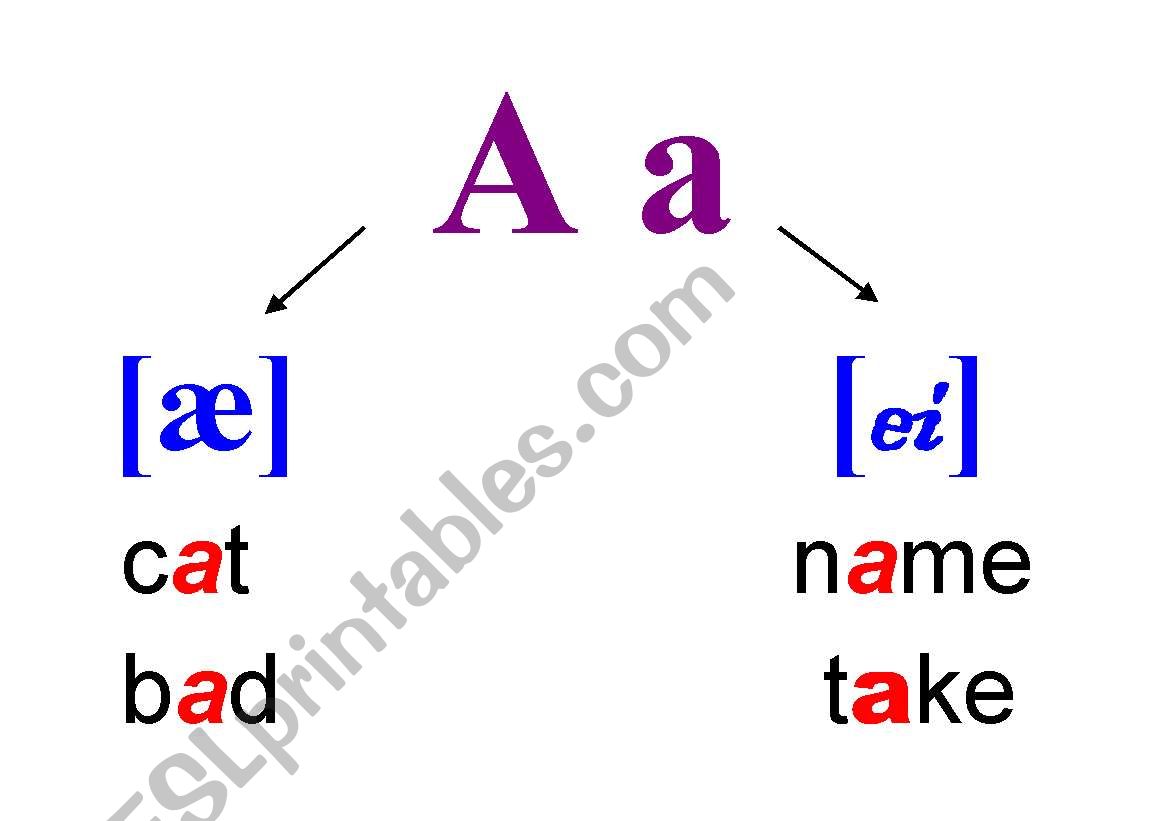El abecedario, también conocido como alfabeto, es una representación estructurada de las letras que conforman un idioma. El alfabeto inglés está compuesto por 26 letras, 5 vocales (a, e, i, o, u) y 21 consonantes (b, c, d, f, g, h, j, k, l, m, n, p, q, r, s, t, v, w, x, y, z).
- Debemos saber que la letra Ñ, no existe en el idioma inglés.
| Letra | Fonética | Pronunciación |
| A | /eɪ/ | [ei] |
| B | /bi/ | [bi] |
| C | /si/ | [ci] |
| D | /di/ | [di] |
| E | /i/ | [i] |
| F | /ef/ | [ef] |
| G | /dʒi/ | [yi] |
| H | /eɪtʃ/ | [eich] |
| I | /aɪ/ | [ai] |
| J | /dʒeɪ/ | [jei] |
| K | /keɪ/ | [kei] |
| L | /el/ | [el] |
| M | /em/ | [em] |
| N | /en/ | [en] |
| O | /əʊ/ | [ou] |
| P | /pi/ | [pi] |
| Q | /kju/ | [kiu] |
| R | /ɑ(r)/ | [ar] |
| S | /es/ | [es] |
| T | /ti/ | [ti] |
| U | /ju/ | [iu] |
| V | /vi/ | [uvi] |
| W | /ˈdʌb(ə)l ju/ | [dabliu] |
| X | /eks/ | [ex] |
| Y | /waɪ/ | [uai] |
| Z | /zed/ | [set] |
Comencemos con la pronunciación de la letra A, en los palabras cat y bad la letra A suena casi igual como en español, y en las palabras name y take, en sonido de la A es (Ei).
La letra Bb es la segunda letra del alfabeto en inglés. Representa un sonido consonante obstruyente, bilabial y
sonoro.
La letra Cc La letra C tiene dos sonidos: uno fuerte, con las vocales a, o, u, ( car, color cute y uno suave con las vocales e, i.( cellphone, city).
La letra Dd, como se puede observar en la figura de la izquierda, el fonema /d/ tiene punto de articulación dental, es decir, se produce al unirse la punta de la lengua con los dientes incisivos superiores. Su fonación es sonora, es decir, las cuerdas vocales vibran cuando se pronuncia.
La vocal Ee, en ingles se pronuncia como la se pronuncia como el nombre de la letra y en ocasiones como la letra i. La Vocal E, junto a otras vocales puede forma mas sonidos vocálicos.





Comentarios
Publicar un comentario